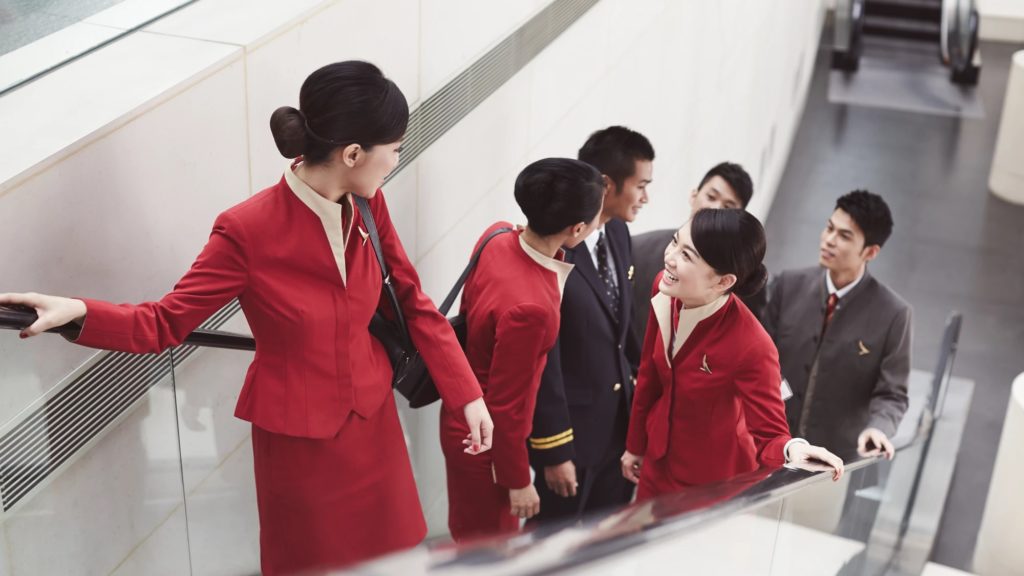Axed: Cathay Pacific’s regional airline Cathay Dragon ceases to soar

What we'll be covering
BREAKING | The Cathay Pacific Group is pulling the plug on its Hong Kong regional airline offshoot Cathay Dragon with immediate effect — a shock move that’s part of a broader corporate restructuring plan as the airline adapts to ‘the new travel reality’.
Cathay Dragon is the latest airline casualty in a volatile world where COVID-19 related travel restrictions have completely decimated air travel. A spokesperson from Cathay Pacific noted that ‘the restructuring will enable the Company to secure its future, so it can protect as many jobs as possible’.
Cathay Dragon’s routes to be consolidated
As of today, Cathay Dragon will no longer operate any more flights. Pending regulatory approval, it’s hoped that the majority of Cathay Dragon’s routes will be operated by Cathay Pacific itself, along with another subsidiary airline HK Express.
Cathay Dragon typically flew regional routes out of Hong Kong, encompassing the likes of China, Japan and South-East Asia. The carrier’s onboard passenger experience and service levels are quite similar to Cathay Pacific, so customers shouldn’t be too impacted by the changes.

Over its 35 years, Cathay Dragon has earned a well-deserved reputation for excellence, thanks to its outstanding service and distinct hospitality, delivered by a remarkable team.
Whilst this is a difficult time, we are a resilient Group and a proud Hong Kong brand. I believe in this plan and I know we will prevail. We remain absolutely confident in the long-term future of Cathay Pacific, the Hong Kong aviation hub and the critical role Hong Kong will play in the Greater Bay Area and beyond.
– Augustus Tang, Cathay Pacific CEO
Staff cuts across the board
As part of an unavoidable cost-cutting measure, the Cathay Pacific Group will be removing approximately 8,500 positions, accounting for roughly 24% of its workforce. Some 5,300 Hong Kong-based employees are expected to be made redundant, along with 600 employees overseas.
The pain is being felt everywhere though. For comparison, Qantas and Jetstar announced 6,000 job cuts in June 2020 and has plans to axe another 2,500 jobs as it outsources ground handling at major Australian airports.
Singapore Airlines also plans to remove 4,300 staff roles, representing a 15% cut to the workforce. More cuts across major airline are certain to come in due course if flying demand isn’t restored soon.
Furthermore, surviving Hong Kong-based cabin and cockpit crew of Cathay Pacific will be asked to agree to pay cuts to ‘enhance market competitiveness’. Executive pay cuts will continue through to 2021 with additional Special Leave Schemes being introduced next year.

The global pandemic continues to have a devastating impact on aviation and the hard truth is we must fundamentally restructure the Group to survive. We have to do this to protect as many jobs as possible, and meet our responsibilities to the Hong Kong aviation hub and our customers.
Our immediate priority is to support those affected by today’s announcement. We are deeply saddened to part ways with our talented and respected colleagues, and I want to thank them for their hard work, achievements and dedication.
– Augustus Tang, Cathay Pacific CEO
How will these changes affect me?
In terms of the Cathay Dragon grounding, it will have little effect for the majority of Point Hacks readers. Those who are collecting Asia Miles, Qantas Points or other partner frequent flyer miles will still be able to redeem them on Cathay Pacific flights.
As mentioned earlier, many of Cathay Dragon’s routes are likely to be reintegrated across the Cathay Pacific network, so you should still be able to redeem reward seats on them when the time is right.
However, some smaller routes may be sent to its low-cost sibling HK Express. In this case, you wouldn’t be able to redeem Qantas Frequent Flyer points on those flights, nor make use of oneworld or Marco Polo Club status for priority perks and lounge access.
Singapore Airlines previously announced a similar move in 2018, with its regional arm SilkAir set to merge with its parent airline in early 2021.
Supplementary images courtesy Cathay Pacific






Community